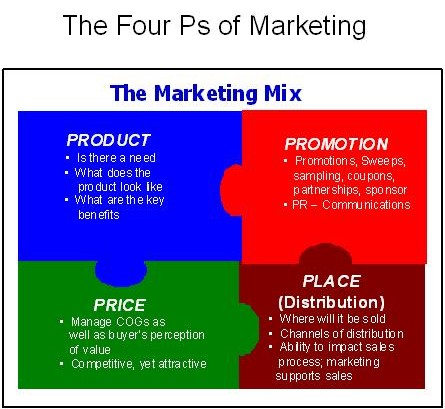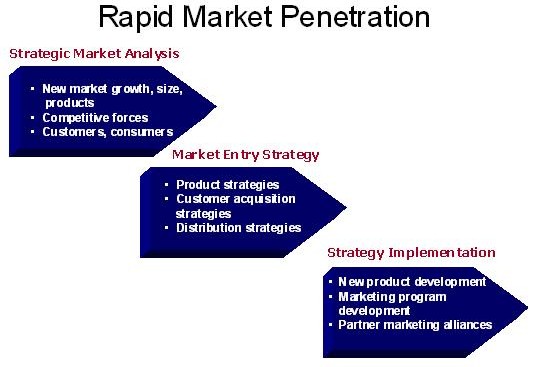Whether your customers are Baby Boomers, Echo Boomers, Gen X-ers or Gen Y-ers, or even Seniors, one thing is sure: They know and understand much more about marketing than ever before.
Call today's consumers more fickle. Call them more curious. Call them more educated. Or call them more in touch with what they want. Maybe it's a combination of all of these elements.
The bottom line is this: To meet and exceed the growing challenges that today's consumers inflict upon a brand, marketers must find the right balance of marketing tools and program elements to create and deliver the right product or service to consumers at the right price, right location, right time, and with the right features and attributes.
Otherwise, the consumer (or buyer) is just not interested.
And oh, by the way, one more thing... to add one more element of complexity: Marketers must constantly adapt to changing consumer demands, consumer tastes, shifting customer priorities, economic downturns, economic upturns, savvy consumers and buyers just looking for something new. Thus, marketing always has to adapt to change.
And every time marketing adapts, there is another plan, another approach, another way of looking at things, another way of creating excitement and, most important, another way to capture the attention of consumers and customers alike.
But before marketing can affect a change with either a new product offering, or reinvigorate a new brand, there's one constant. In marketing, it's the "Four Ps."

The standard Four Ps of the marketing mix—Product, Price, Place (distribution) and Promotion—are often viewed singularly and in more of a silo approach. But we're finding more and more that each cannot work alone. In fact, it would be challenging to look at them just as independent functions of the marketing mix. By integrating these traditional tools to adapt to today's constantly changing and fluctuating marketplace, marketers can be more productive in the overall process.
Rapid Market Penetration
Rapid Market Penetration is an integrated, three-phase process that simply makes each function more relevant for marketers. Rather than looking at each marketing mix element individually, each phase of the process combines the use of multiple marketing elements to help marketers develop more intelligent marketing programs for today's increasingly competitive marketplace.
Under the Rapid Market Penetration model, the first phase, Strategic Marketing Analysis, includes looking at every element of the marketplace. From such economic factors as the market, industry growth and size to the number of competitors and their market share, Strategic Marketing Analysis helps you determine what has worked versus what has not, what competitive forces are inherent in the marketplace or industry, who are your potential customers and consumers, and how can you reach them.
Essentially, in this first phase, the issue of Product, Price and Place (distribution) all come together tangentially to identify if there is in fact an opportunity or void to fill. You also could sum this up as an "Opportunity Analysis" phase.
The second phase is Market Entry Strategy. This is the point after which you have already answered the questions "Is there an opportunity?" and "Is there a need?" and now must move on to actually developing the strategy. During the Market Entry Strategy phase, product strategies are reviewed, including what the product or service offering will look like, what key benefits it will deliver to the consumer or user, what its price will be, how to get customers, where the product will be sold and how to penetrate distribution channels.
Like the initial phase, Market Entry Strategy utilizes many key elements of the marketing mix and relies heavily on the Product, Price, and Place (distribution). In addition, Promotion elements are reviewed during this second phase as developing integrated marketing programs and sales support materials for the selling process are crucial.
In the third phase, Strategy Implementation, everything comes together and the consumer actually sees the product or service. Three key elements in this phase include (1) looking at new products, services, and brand extensions to support a long brand lifecycle, (2) developing an integrated marketing program and plan including advertising, promotions, and public relations, and (3) finally the creation of selected partnership marketing programs.
It is important to note that the Strategy Implementation phase uses all of the Four P's in concert with one another:
- New Products are reviewed and planned.
- Pricing remains a key concern, can be massaged to constantly be competitive, and can include customer and consumer incentives.
- Placement (distribution) is always top of mind as key marketing communication drivers help to gain and maintain distribution.
- Promotions are used to introduce consumers to a product or service by inducing trial and eventually building customer loyalty.

Using the Rapid Market Penetration process will allow marketers to view all of the Four Ps of the marketing mix together to better understand whether there is a need or opportunity for their product or service, what that product or service will look like, who it will appeal to, and finally how to get consumers to buy or use the product or service.
In today's busy world of brand marketing, utilizing the strength of this Rapid Market Penetration process will help marketers plan better, get to market faster and remain even more competitive in today's constantly changing marketplace.




